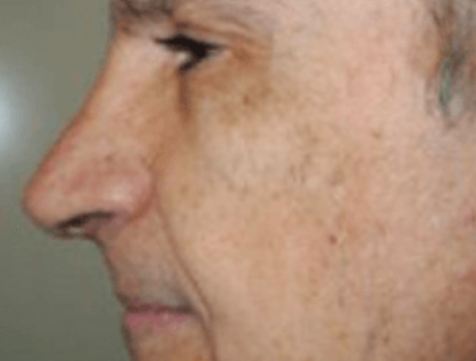Have you ever found yourself standing in front of a mirror, imagining a slightly different nose shape? In the world of cosmetic surgery, you’re not alone. Many are torn between choosing nose fillers and undergoing rhinoplasty. But worry not! With 20 years of plastic surgery experience, Dr. Amy Bandy is here to guide you through the nuances of both procedures.
Contents
- 1 What are Nose Fillers?
- 2 Defining Rhinoplasty
- 3 Comparative Advantages
- 4 Benefits of Nose Fillers
- 5 Advantages of Rhinoplasty
- 6 The Procedure
- 7 How Nose Fillers Work
- 8 The Rhinoplasty Process
- 9 Making the Right Choice for You
- 10 Questions to Ask Yourself
- 11 Amy Bandy’s Expertise
- 12 Contact Dr. Amy Bandy Today!
- 13 FAQs
What are Nose Fillers?
Nose fillers, commonly called “liquid rhinoplasty”, involve injecting a filler into specific areas of the nose to modify its shape. It’s a non-surgical method that:
- Provides instant results.
- Can be used to smooth out minor bumps.
- Is temporary and reversible.
Defining Rhinoplasty
Rhinoplasty, or what many call a “nose job”, is a surgical procedure to change the shape or function of the nose. This method:
- Offers permanent changes.
- Can address both cosmetic and functional issues.
- Requires a recovery period.
Comparative Advantages
Benefits of Nose Fillers
- Less Downtime: Quick in and out of the clinic.
- Flexibility: Decide if you want a different look after a few months.
- Lower Immediate Cost: Typically less expensive than surgery upfront.
Advantages of Rhinoplasty
- Lasting Results: Once healed, your new nose is here to stay!
- Versatility: Can address more significant structural and functional issues.
- One-Time Procedure: No need for repetitive treatments.
The Procedure
How Nose Fillers Work
- A numbing cream is applied.
- The chosen filler is then injected into targeted areas.
- Immediate results with slight swelling that subsides within a few days.
The Rhinoplasty Process
- Consultation with Dr. Amy Bandy to determine the desired outcome.
- Surgery under general anesthesia.
- A recovery period, including post-surgery care and check-ups.
Making the Right Choice for You
Questions to Ask Yourself
- Am I looking for a temporary or permanent solution?
- What’s my budget?
- How much time can I allocate for recovery?
- Do I have any functional issues with my nose?
Amy Bandy’s Expertise
With two decades in the plastic surgery field, Dr. Bandy has successfully performed countless nose filler procedures and rhinoplasties. Her expertise ensures you receive top-notch care, whether you choose a surgical or non-surgical route.
Contact Dr. Amy Bandy Today!
Deciding between nose fillers and rhinoplasty is a personal choice that depends on various factors. Always remember: it’s crucial to consult with an experienced plastic surgeon, like Dr. Amy Bandy, to make an informed decision tailored to your needs.
FAQs
How long do nose fillers last?
Typically, 6-12 months, but it can vary depending on the type of filler and individual factors.
Is rhinoplasty painful?
Discomfort post-surgery is common, but pain is manageable with medications.
Can I switch from nose fillers to rhinoplasty later on?
Yes, you can opt for a surgical procedure after having fillers, but there should be a gap between the two.
Are there any side effects to nose fillers?
Minor swelling or bruising might occur, which usually subsides within a week.
How long is the recovery period for rhinoplasty?
Most people return to everyday activities within two weeks, but full healing takes a few months.













